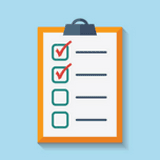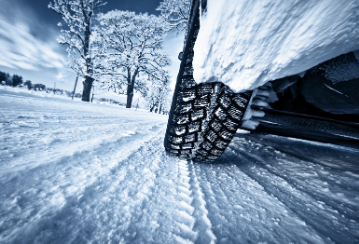News and Updates
Tips for safer winter driving
As days grow shorter and temperatures drop, the winter driving season is upon us. Snowy roads can be slick and treacherous, and even the most experienced drivers can benefit from brushing up on winter safety tips after months of warmer weather. Review this checklist before the next winter storm hits to help keep yourself and others safe.
1. Equip your car with winter tires
Once the weather gets colder you should install winter tires. Winter tires are designed to give you increased traction in cold, icy weather and on snowy roads. Without them, you’re more likely to lose control of your car or get stuck in bad weather. Don’t forget to tell your insurance company that you have winter tires, as you could receive a winter tire discount on your car insurance premium!
2. Slow down and keep your distance
One of the most important components of winter driving is giving yourself more time to react. Slow down and increase your usual following distance behind other vehicles to give yourself more time to stop, in the event of an emergency. Don’t use cruise control when it could be slippery, as it will increase the time it takes to react in an emergency. You should also brake and accelerate slower than you would on a clear day. Never slam your brakes, as that could initiate a skid.
3. Review how to control a slide
Reviewing tips to get out of a slide and practicing them will help you react correctly if you get into a slide while driving. Review these infographics from Canada Drives and CAA to review the best way to get your car back under control if you get into a skid.
4. Clean off your car
Cleaning snow and ice off your car before hitting the road is important for your visibility and safety. Before you drive, clear all snow and ice off your windows, hood, taillights, headlights, roof, safety cameras and safety sensors. If you don’t take the time to brush snow off your car, it can fall onto your windshield or blow into the car behind you. In Ontario, you can be fined if you cannot see clearly out of your front, front side and rear windows.1
5. Top up your supplies
When driving in the winter, keep your gas tank at least half full in case of an emergency. Make sure you transition to winter windshield washer fluid with de-icer and keep an extra jug in your trunk. Check that your car emergency kit is stocked with items such as blankets, food, flashlights, a first aid kit and other tools — review our full list of items you need in your car emergency kit.
6. Plan your route ahead of time
Before you head out, check the weather so that you know what to expect. If it looks like it will be snowy or icy, plan to take main roads, as they are more likely to be well maintained. Give yourself extra time to get to your destination so you will have no need to rush and can take the time to clean snow off your car and drive safely.
Winter is also a good time to review your car insurance coverage. Make sure you have the coverage you need in case you do have an accident. To review your current OTIP car insurance policy, call 1-800-267-6847. To get a quote for car insurance from OTIP, call an insurance broker today at 1-866-561-5559.
1. Legislative Assembly of Ontario





